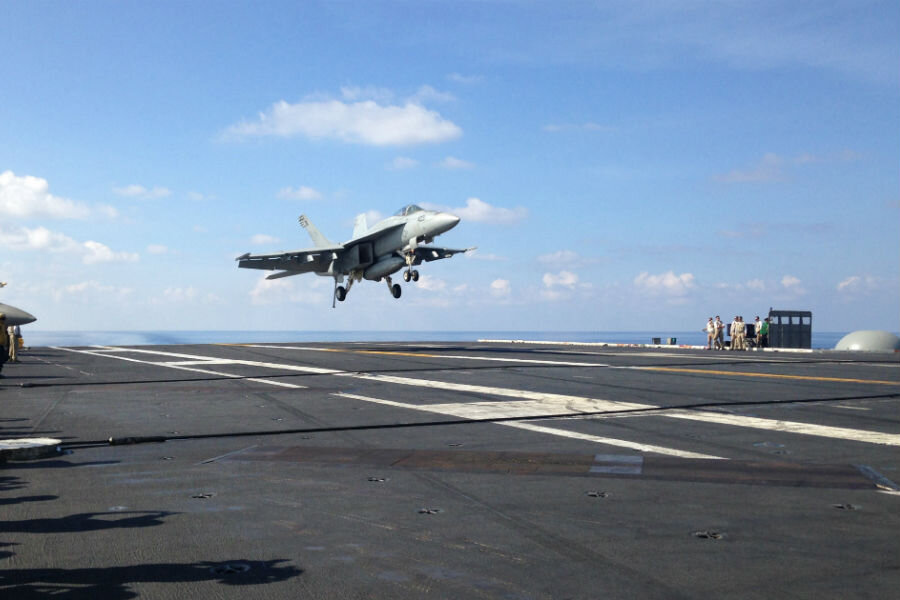Why is China intercepting American planes on routine patrols?
A Chinese fighter jet carried out an "unsafe" intercept of a US spy plane in international airspace over the East China Sea, the US Pacific Command said Tuesday.
This is not the first time this has occurred; in May, two Chinese fighter jet came within 50 feet of a US reconnaissance plane over the South China Sea, forcing it to dive 200 feet to avoid a collision, the Pentagon said.
In China's eyes, US reconnaissance in the region is "seriously endangering Chinese maritime security."
"We demand that the United States immediately cease this type of close reconnaissance activity to avoid having this sort of incident happening again," China’s Foreign Ministry spokesman Hong Lei said in May.
The most recent incident involved a US Air Force RC-135 reconnaissance plane and two Chinese J-10 fighter planes, the US Pacific Command said Tuesday.
"One of the intercepting Chinese jets had an unsafe excessive rate of closure on the RC-135 aircraft," according to a statement from US Pacific Command. "Initial assessment is that this seems to be a case of improper airmanship, as no other provocative or unsafe maneuvers occurred."
The Chinese responded strongly to the US’ allegations. Mr. Lei defended China's has "right to take defensive measures," and the Chinese Defense Ministry said they were looking into the report.
"Judging by the report, the U.S. side is again deliberately hyping up the issue of the close surveillance of China by U.S. military aircraft," it said in a statement.
The East China Sea is the location of a territorial dispute between Japan and China. In 2013, China established an air-defense identification zone, which requires foreign aircraft to identify themselves, over the East China Sea, the Wall Street Journal reported. In response, the US sent two B-52 bombers into the zone without notifying the Chinese.
China is threatening to establish an Air Defense Identification Zone (ADIZ) over the South China Sea, which US Secretary of State John Kerry told the Journal would be "provocative and destabilizing."
In recent months, China has been strengthening its hold on the South China Sea, as The Christian Science Monitor has reported. China has been building islands in the sea to establish their dominance of the region.
Gregory Poling, director of the Asia Maritime Transparency Initiative at the Center for Strategic and International Studies, told the Monitor in March that although China’s long-term naval strategy is to push the US military out of the area, China’s goal is to achieve administrative dominance of the seas.
China has overlapping claims with the Philippines, Vietnam, Malaysia, Taiwan, and Brunei over the South China Sea. The US has accused China of militarizing the area, through which $5 trillion is shipped through each year, by creating artificial islands. China has responded by criticizing US naval activity in Asia.
Mr. Poling told the Monitor the ruling of an international tribunal, the Permanent Court of Arbitration in The Hague, on the Philippines’ South China Sea territorial claims against China will be a major development this year.
The ruling is expected in the coming weeks, and the United States is worried it may push China to declare the ADIZ over the South China Sea. The Chinese foreign ministry issued a statement on Wednesday calling on the Hague to drop the case, the South China Morning Post reported.
The countries remained at odds after the annual US China Strategic and Economic Dialogue ended Tuesday, as The New York Times reported. The Obama administration is urging that China negotiate with its neighbors who hold claims, but the Chinese have said the land is theirs and they refuse to negotiate and will ignore the court’s ruling.
The annual discussion between the countries did little to solve the contentious debate, The Times reported, and there is no solution is sight.
This report contains material from Reuters.







